Introduction
Google might still be a relative foldable phone newcomer, but if the Pixel 10 Pro Fold is any indication, the firm is confident it nailed the brief last time out. This new book-style handset might be packing a pair of world-firsts, a next-gen chipset, and more Gemini smarts than you can shake a generative AI stick at, but it also leans heavily on what made its predecessor stand out a year ago.
As much as I liked the Pixel 9 Pro Fold, twelve months is an eternity in the tech world. Foldable rivals have since set new standards for skinniness, while also boosting battery capacity and improving their camera game. The Samsung Galaxy Z Fold 7 and Honor Magic V5 are the new pair to beat.
Pricing is at least unchanged from the previous generation, meaning the Pixel 10 Pro Fold kicks off at $1799/£1749 for the 256GB model. But with a similar set of camera sensors and a body that now looks almost portly in comparison, is Google already on the back foot?
Design & build: subtle evolution
New Moonstone (grey) and Jade (green) colours aside, the Pixel 10 Pro Fold doesn’t look very far removed from its predecessor – but that’s not a huge shock, given how the last-gen phone was a course-correction from the original Pixel Fold. The outer screen keeps its slightly stubby 20:9 aspect ratio; the rounded-rectangle camera island still sits off to one side at the rear; and the back panel is still frosted Victus 2 glass.
The frame also retains its blend of matte and polished metals. The former is fingerprint-resistant, while the latter does quite the opposite. Google has used a tougher kind of aluminium, and the hinge gets more steel for added strength, which bodes well for long-term ownership. I certainly didn’t notice any surface scratches from a week of testing.
Moving the SIM tray to the top of the phone is the only obvious physical tweak. Slightly smoothing off the frame edges has also made the phone that bit nicer to hold now, but the overall weight and dimensions haven’t changed. Fair play to Google for matching last year’s model gram for gram while also adding a ring of magnets for Qi2 compatibility, but there’s no escaping the fact the Pixel 10 Pro Fold is now a proper heavyweight in a world of size zeros.
At 258g, Google’s foldable tips the scales some 40g more than Samsung and Honor’s slender models. Having used the Z Fold 7 as my main phone for the few months prior to this review, the Pixel felt significantly weightier in my hand. The thicker dimensions were also impossible to ignore. When unfolded, the Pixel being a single millimetre more per side doesn’t sound like a lot – but it means the phone measures 10.8mm when shut, which is how you’ll be using it the majority of the time. The Galaxy’s 8.9mm is far closer to a non-folding flagship.
Google does have extra ingress protection in its favour. An IP68 rating is as good as it gets for any foldable phone right now, and should provide a little extra peace of mind over the alternatives.
The fingerprint-sensing power button still feels all but indistinguishable from the volume keys, and arranged the opposite way to other big-name Androids (with power at the top and volume below). You’ll need to build up some muscle memory before you’ll hit it first time if you’re coming from a rival brand. It was quick enough to recognise my thumb, though the facial recognition was just as speedy – and both selfie cams are secure enough to unlock your banking apps.
Screen & sound: shine on
Given the dimensions are near-identical, you might also expect the Pixel 10 Pro Fold’s two displays to be an exact match for the previous generation. That’s not entirely the case: Google has shrunk the exterior screen’s bezel down just enough to grow the panel to 6.4in, up from 6.3in before. Samsung and Honor’s bezels are even skinnier, though, and don’t have the odd asymmetric frame peeking in from the hinge side, either.
The aspect ratio and resolution haven’t changed from last year, meaning the 2364×1080 OLED is a fraction less sharp this time around – but without a microscope you’d never notice the difference. It looked perfectly crisp to me, with the fantastic viewing angles and impeccable contrast I expect of the tech.
A 60-120Hz refresh rate is a little disappointing, given rivals now use LTPO panels that can dip as low as 1Hz for maximum power savings, but at least scrolling and fast motion appeared smooth. Colours were on point, too – not overly vivid, but still packing enough punch to make images and video stand out. That’s handy, as Google still only gives you two basic picture modes to choose from.
The biggest upgrade is to brightness, which now peaks at 3000 nits rather than the 2700 nits the old phone could manage. That was pretty legible on sunny days to begin with, and this one is even better. It’s a bigger deal for the 8.0in inner display, as the flexible panel (and obligatory screen protector) is a lot more reflective. Visibility is definitely a step up from before.
Google still does a better job than any other foldable firm at hiding the screen protector under the bezel, which helps remove any temptation to peel it off and invalidate your warranty. I can’t say that the crease is any less noticeable than before, and the hinge feels more noticeable under a finger than the Galaxy Z Fold 7’s does, but it’s in no way distracting.
The 2152×2076 resolution looks just as defined as the outer screen, and you get a superior 1-120Hz dynamic refresh here. The 1:1 square aspect ratio is ideal for running two apps side-by-side, but it’s less suited to video than the taller Samsung and Honor. A 16:9 YouTube video looks barely any bigger than it does on the outer screen once you factor in the black bars either side of the image.
That’s a shame, as the Pixel 10 Pro Fold’s speakers are well suited to movies and music. The stereo separation is convincing enough and the speaker grilles being split across the phone’s two halves means it’s impossible to block entirely when you’re holding it, whether open or closed.
Cameras: all about algorithms
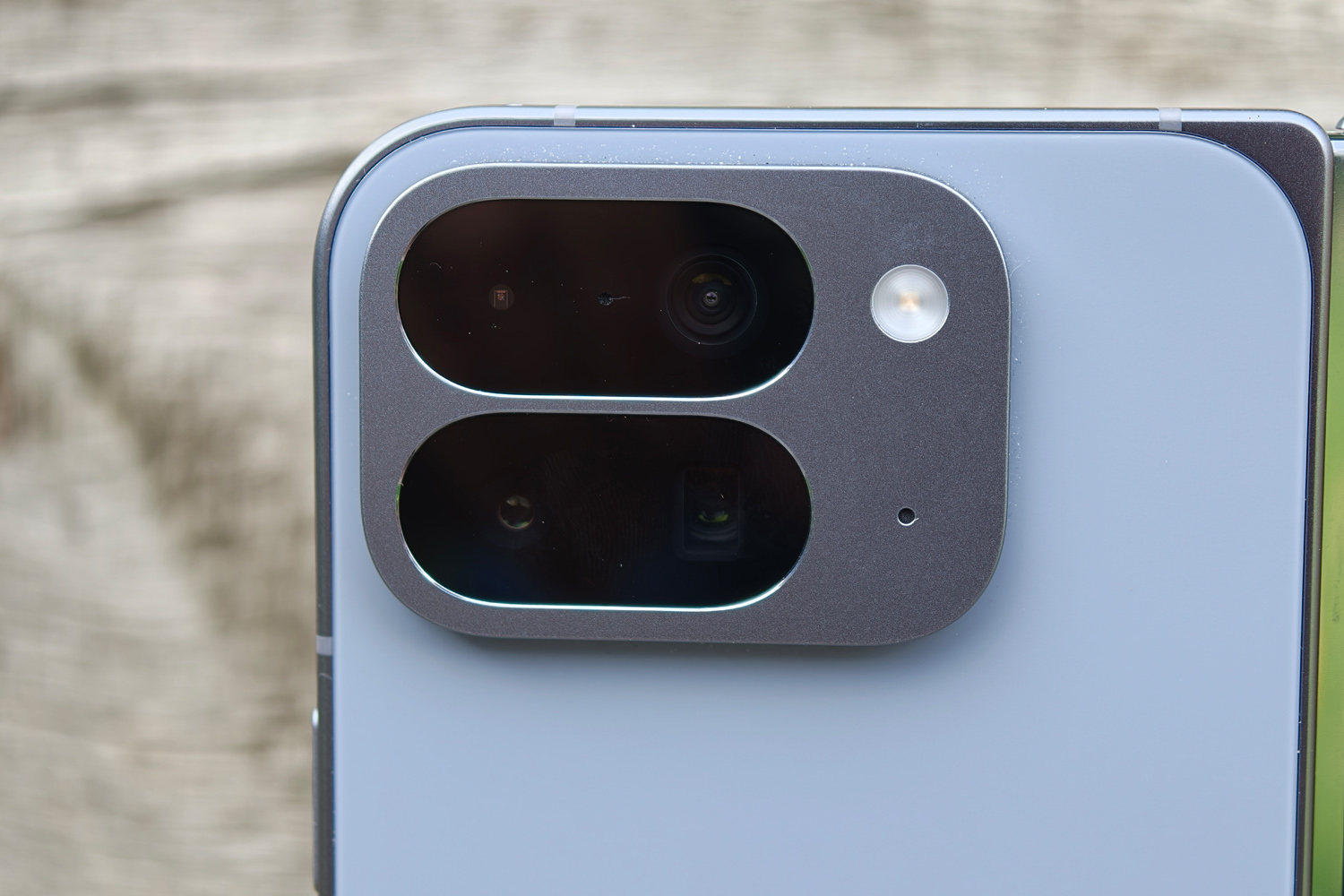
Google is rarely at the front of the queue for new camera hardware, preferring to let its image processing to most of the heavy lifting. That remains the case for the Pixel 10 Pro Fold, which uses the same rear trio as its predecessor. The 48MP main snapper and 10.8MP telephoto are actually now making their third appearance, having debuted on the original Pixel Fold, while the 10.5MP ultrawide is a year younger. Selfie and video calling duties continue to be handled by a pair of 10MP punch-hole cameras.
On pure numbers, that puts it behind both the Z Fold 7’s 200MP lead lens; the Honor Magic V5 also has an advantage with its 64MP telephoto and 50MP ultrawide. You are getting stronger 5x magnification here, though. Google says it’s good for ‘optical quality’ 10x once its algorithms come into play, and 20x Super Res zoom. The ultrawide can also handle macro close-ups.
To my eyes overall image quality hasn’t come on a huge amount from last year – but this is still very capable for a foldable phone. You can expect great consistency across all three lenses, with plenty of dynamic range and well-judged exposures in most lighting. Colours look more natural and nuanced here than they do on a Galaxy Z Fold 7, and contrast is a little heavier, though there’s less in it than previous years. Focusing isn’t always on point, especially for indoor scenarios with moving subjects; trying to get a clean shot of my toddler at the soft play centre proved very tricky.
Detail is preserved very well, even on the secondary lenses which have fewer pixels to work with. As ever, Google isn’t afraid to preserve image noise, and doesn’t apply nearly as much smoothing as its rivals. That can mean some shots look a little softer, but also more film-like and less processed. It also falls behind the best non-folding flagships for outright clarity, but not by a colossal margin.
The 5x telephoto is fantastic for portraits and close-ups, delivering a convincing natural bokeh. Rival foldables have to use sensor cropping or digital zoom to get as close, and the quality difference is clear. I admit I sometimes didn’t need all that magnification, though – a 3x toggle in the camera app for portraits might’ve been handy.
Low light shooting does show up the limitations of smaller sensors, though Google’s Night Sight image processing remains fantastic at preserving details and keeping colours close to reality. Optical image stabilisation certainly helps the main and telephoto cameras keep images clean and shake-free, as the ultrawide can’t match them once it’s properly dark.

Few phones make the act of taking pictures as straightforward as a Pixel, with returning features like Made You Look keeping kids focused on the camera by putting animated cartoon characters on the external display. Use the inner screen to compose your shot and the Instant View can put your most recent snaps alongside the viewfinder for quick review.
I’m still not entirely convinced by Add Me, which asks you to hand the phone over to someone else so you can appear in group shots; the few times I’ve tried it, the person taking the second shot struggled to get the framing right, while everyone else in the photo wonders what the hold up is. Camera Coach is far more useful for these kinds of amateur snappers, using scene recognition and generative AI to suggest ways of improving the current scene. The tips it gives won’t transform a serious photographer’s output, but it proved quite effective when I let an older family member give it a try.
Software experience: more AI than ever
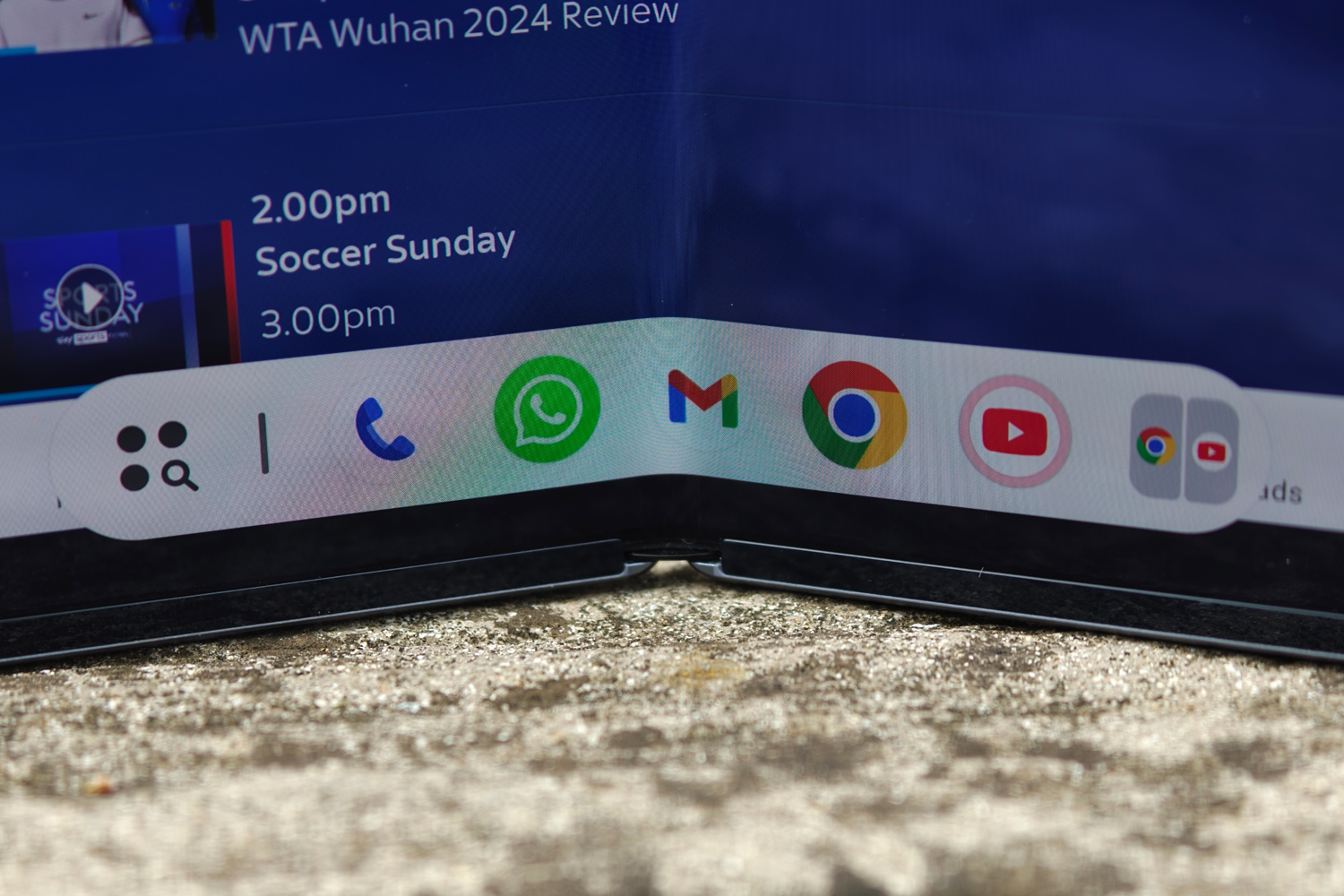
Buying a Pixel phone used to guarantee you were getting the most stripped back, minimal take on Android around, but that’s not quite the case any more. The Pixel 10 Pro Fold is stuffed to the gills with own-brand apps; most are now Gemini-infused, and not all of them have wide appeal.
Pixel Weather, which generates AI forecast summaries, is innocuous enough. So is Pixel Screenshots, which keeps all your screen grabs separate from your photo library and recognises text to make them searchable. Pixel Studio generates its images in the cloud, rather than on-device, but it’s not especially useful now you can do the same in a Gemini prompt. The NotebookLM research tool is seriously powerful once you get to grips with it, but feels more at home on a computer desktop than a phone.
The biggest new feature is Magic Cue, which can contextually react to what you’re doing onscreen and provide useful information. Having already experienced it on the Pixel 10 Pro XL, I was prepared for the way it can suggest replies to Google Messages chats with things like restaurant suggestions or map directions; I’m still waiting for it to roll out to other apps like Gmail, though.
All of this runs atop Android 16, with the new Material 3 Expressive design tweaks making everything feel fresh even if you’re coming from an older Pixel phone. Visually there’s little to separate the Fold from the rest of the Pixel 10 line-up, save the app launching shortcut bar that appears with a short swipe up from the bottom of the screen when unfolded.
The few Fold-specific features include being able to drag and drop images and text between apps now – a multitasking must, if you ask me – and a 90:10 split that makes multitasking a little easier. It’s a shame Google still won’t let you have more than two apps open at once, though, either as a floating window or a OnePlus-style open canvas expanding beyond the bounds of the display.
Google still leads the way on software support, with seven years of new Android generations promised as well as seven years of security patches.
Performance: G5 alive
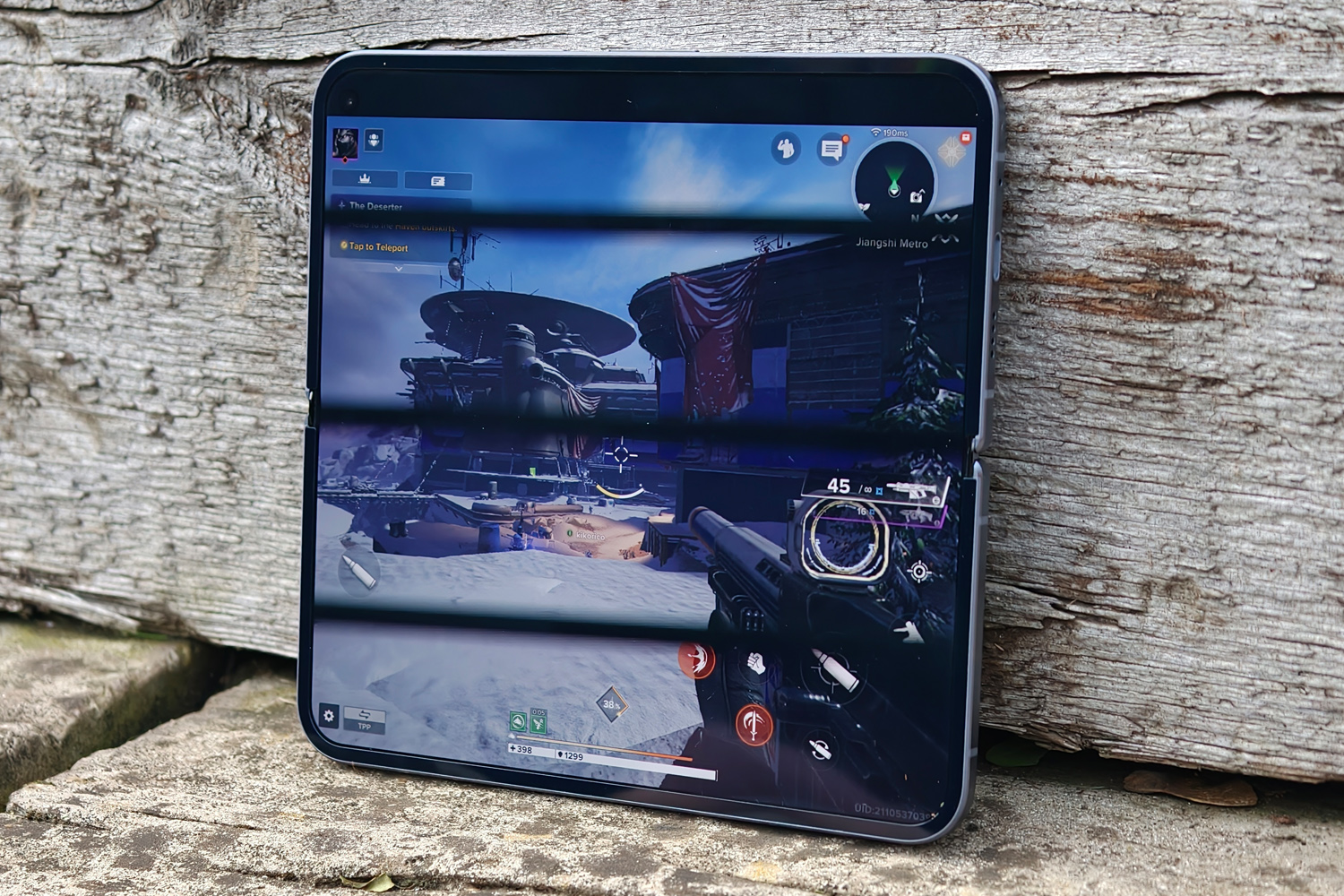
Google has swapped from Samsung-produced silicon to TSMC for its latest Tensor chips, and you’ll find the same one in every Pixel 10 handset. The Tensor G5 uses a more power efficient 3nm architecture and splits its eight cores slightly differently, with the most potent one now able to hit a rapid 3.78GHz (up from 3.1GHz on Tensor G4), but they’re still based on older ARM designs than what the latest Snapdragon CPUs have access to.
Here it’s paired to 16GB of RAM, putting it on par with the Pixel 10 Pro XL. My review unit was the base model, with 256GB of storage. There’s also a 512GB version, and Google even added a 1TB edition to the mix for the first time – though it’s sure to leave a huge crater in your wallet.
At the time of writing a lot of synthetic benchmarking apps were blocked, but I was still able to run a few for a direct comparison with rival foldables. It doesn’t make for especially great reading, with the Pixel 10 Pro Fold being slower across the board than the Qualcomm-powered Galaxy Z Fold 7.
However, Google has tuned Android to such an extent everyday performance feels just as speedy. Apps open in a flash, side-by-side working on two apps always feels responsive, and there was no obvious slowdown or animation stutter at any point during my testing. For everyday duties I really can’t fault it, as was the case with the rest of the Pixel 10 lineup. If you don’t obsess over benchmark scores, you’ll be perfectly happy here.
| Google Pixel 10 Pro Fold benchmarks | |
| Speedometer 3.1 | 22.4 |
| PCMark Work 3.0 | 15911 |
| 3Dmark Wildlife Extreme | 3177 |
Gaming is a similar story. With ray tracing seemingly disabled on a hardware level and more limited support for certain graphics tech than Snapdragon, the Pixel is in theory on the back foot. And yet even the demanding Play Store titles I tried were playable at smooth frame rates. Destiny: Rising, Call of Duty Mobile and Diablo Immortal were all just fine – albeit usually at a lower detail level or with a lot more aliased edges, suggesting a lower rendering resolution. The phone does get toasty when the GPU is pushed for any stretch of time, too, so it wouldn’t be my first suggestion for any hardcore gamers.
Battery life: snap to it
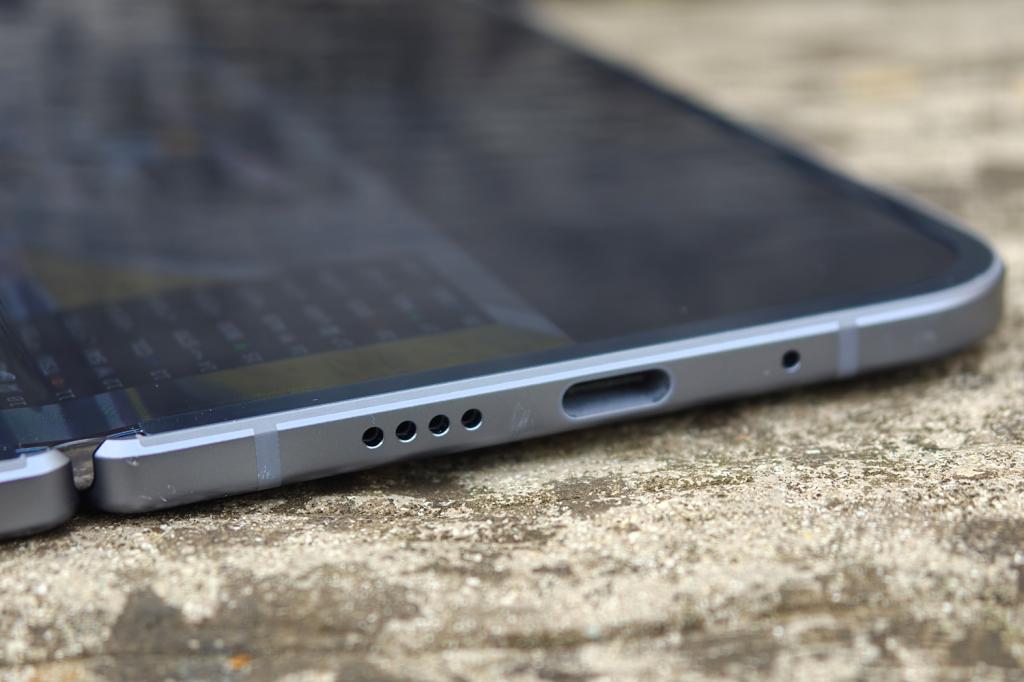
Qi2 has been a long time coming, but the Pixel 10 line has finally brought the magnetic wireless charging standard to Android en masse, and the Pixel 10 Pro Fold is the first to do it for foldables. Google’s Pixelsnap range might be tiny compared to the amount of Apple MagSafe-compatible kit, but they’re largely compatible with one another; as long as the camera island doesn’t get in the way, there’s nothing stopping you from throwing on a MagSafe battery pack or other accessory.
It’s great to see wireless charging speeds increase, too. The Pixel 10 Pro Fold can now manage 15W refuels, up from a meagre 7.5W on the old phone – although the Pixel 10 Pro XL goes even better with Qi2.2 25W support. Wired top-ups over USB-C now top out at 30W, which is also an improvement from the previous generation, but still lags behind the fastest phones out of China.
Stick to the basics and the Pixel 10 Pro Fold is able to go a decent stretch away from the mains. It helps that the 5015mAh cell is a healthy amount larger than the 4650mAh one seen in the last-gen phone. While it’s a long way short of the Honor Magic V5, once again Google’s software optimisations have come in clutch.
While I didn’t ever meet the firm’s claimed 30 hours of uptime, I did manage to last that bit longer than on the last-gen phone. That meant a day of work travel exclusively on 5G, with some video streaming, web browsing, camera use and lots of productivity apps, without running low enough I felt the need to activate the battery saver mode before making it home late that evening. The Pixel 9 Fold would’ve been sapped several hours earlier.
Google Pixel 10 Pro Fold verdict
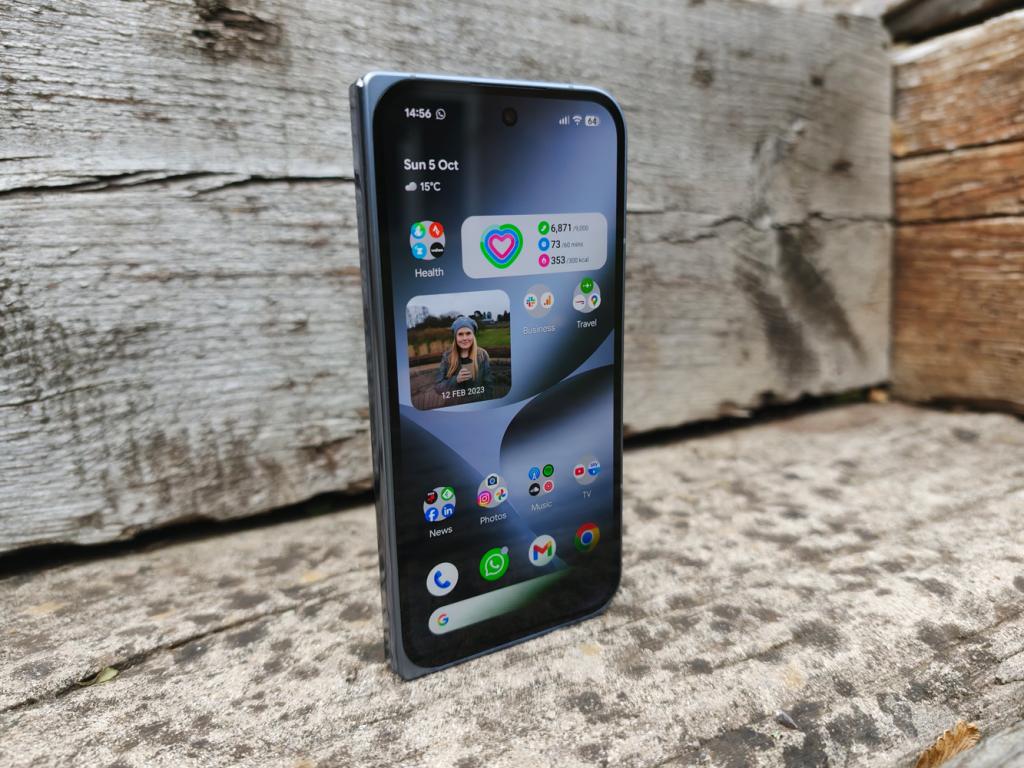
It’s a modest yet meaningful improvement on its forebear – so why doesn’t the Pixel 10 Pro Fold earn the same five star score? Simply put, rival foldables have stepped up their game this year, prioritising slim dimensions without compromising elsewhere. Google’s effort is that little bit chunkier, and lacks a bit of wow factor as a result.
The Pixel is still an excellent all-rounder, though, with a very capable set of cameras, decent battery life, and some features you won’t find anywhere else like Qi2 charging and IP68 protection. Android is as slick as ever, whether you’re on board with all the Gemini additions or not. General performance is really rather good too, even if benchmark scores don’t always back that up.
So while it feels like an iterative update, rather than the top-to-bottom overhaul Samsung gave the Z Fold 7, long-time Pixel fans that aren’t concerned about being the thinnest or lightest will still find plenty to like.
Google Pixel 10 Pro Fold technical specifications
| Screen | 6.4in, 2364×1080 OLED w/ 120Hz (outer) 8.0in, 2152×2076 OLED w/ 120Hz (inner) |
| CPU | Google Tensor G5 |
| Memory | 16GB RAM |
| Cameras | 48MP, f/1.7 w/ dual pixel PDAF, OIS + 10.8MP, f/3.1 telephoto w/ dual pixel PDAF, OIS, 5x optical zoom + 10.5MP, f/2.2 ultrawide w/ PDAF rear 10MP, f/2.2 front w/ PDAF |
| Storage | 256GB/512GB/1TB on-board |
| Operating system | Android 16 |
| Battery | 5015mAh w/ 30W wired, 15W Qi2 wireless charging |
| Dimensions | 155x150x5.2mm (unfolded) 155x76x10.8mm (folded) 258g |
Read the full article here